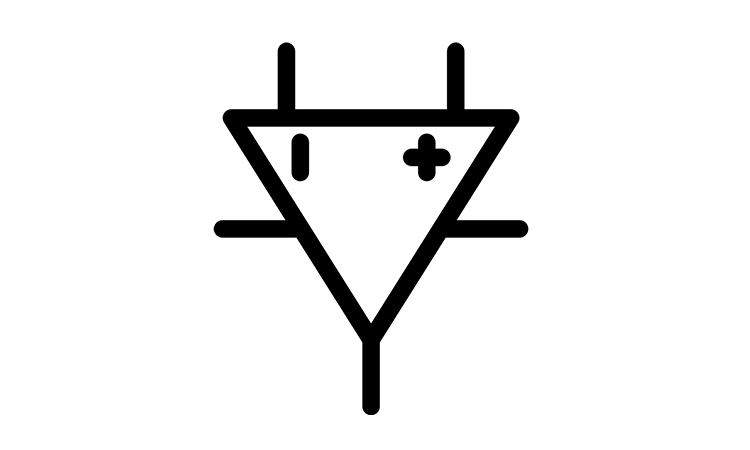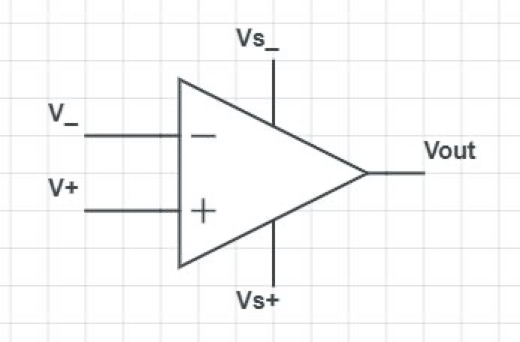This post answers the question “What are the characteristics of operational amplifier?”. An Operational amplifier mostly known as op-amps is a DC-coupled high-gain electronic voltage amplifier that consists of a three-terminal device including inverting input, non-inverting input, and a single-ended output.
Operational amplifiers are basically voltage amplifying devices that are used with external feedback elements such as resistors or capacitors.
Here, – non-inverting input, – inverting input, – output signal, – positive power supply, – negative power supply.
From the diagram, we can see that an operational amplifier has three terminals like 2 inputs non-inverting and inverting, and one single output as well as two power supplies. Anyway, in this post, we’re going to talk about the characteristics of operational amplifiers.
Here are the characteristics of operational amplifiers
Infinitely high input impedance
This ensures that the operational amplifier causes no loading in the circuit. The higher the input impedance, the no current will draw. So, we need a high input impedance so that the operational amplifier doesn’t disturb the original circuit by pulling current from it. The formula of the input impedance is .
Here, the lower the current () will be, the higher the input impedance () will be.
Zero output impedance
When an operational amplifier produces its output signal then we need the operational amplifier to have zero voltage. So that the maximum voltage will transfer to the output load.
Infinite open loop gain
The open-loop operational amplifier doesn’t contain any feedback (positive or negative), so the amplifier produces a high gain.
Infinite Band Width
An ideal operational amplifier can be operated on a wide range of frequencies. It can amplify any frequencies from DC signals to the highest AC signals. But most operational amplifiers contain limited bandwidth.
Zero offset voltage
The operational amplifier output is zero when there is no voltage between inverting and non-inverting input. That means when the difference between two inputs inverting and non-inverting) is zero, then the Op-Amp o/p will be zero. But the output of most operational amplifiers will not be zero during switching OFF as there will be a little voltage from it.
Slew rate(Infinite)
It’s the rate at which the output reflects when the input changes. In an ideal operational amplifier slew rate should be infinite because when any changes are made in input then the output reacts quickly without any delay.
Power Supply Rejection Ratio (PSRR)
The ability of an operational amplifier to reject any variation in supply that might reflect output. Ideal operational amplifiers have high PSSR.
CMMR(Infinite)
The Common Mode Rejection Rate should be infinite so that the noise will reduce more.It’s the ratio of differential gain to common gain.
Here, is differential gain and common gain where the .
That means
Input resistance (Infinite)
If a resistance value is more, then the output voltage will be more, and gain increases.





